Estimated reading time: 12 minutes
Arex is a relatively new brand in the United States, but the Slovene manufacturer has been in the arms business in Europe for three decades. The first Arex to hit the American market was the Arex Zero. A Sig Sauer double-action clone at half the Sig price. The Arex Delta, the firm’s entry into the striker-fired polymer pistol market is just as easy on price, but harder to pin down design-wise.
The new Arex Delta Gen. 2 features a Steyr-like double-action trigger. It comes with both an optics-ready capacity and ambidextrous controls that other makers are finally gravitating toward universally. Although modern, well-appointed, and arguably safer than other handguns, its mix of features to make all shooters happy might make none of them happy.
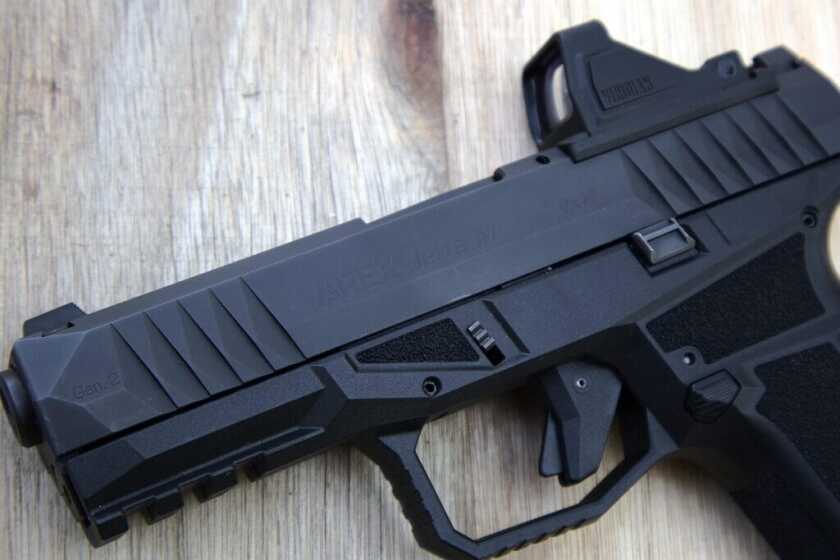
Table of Contents
Arex Delta Gen. 2 Features
The Arex Delta Gen .2 comes in three different sizes. The L model has a full grip and a 4.5-inch barrel. There is also a compact M model with a shorter barrel, slide, and grip. The X model is a crossover with the L model’s barrel and slide and the M grip. Arex was inspired by Glock’s recent crossover pistols. But aside from having a polymer frame, a striker-fired mechanism, and shipping with multiple backstraps to beef up the grip, the similarities end.
“Double Action” Trigger
The Arex Delta has more in common with the Steyr M9 series of handguns. The stippled grip frame has a flattened, rather than rounded profile at the backstrap. The backstrap itself terminates at a high beavertail allowing an unusually high grip, much like a Steyr. That allows for good finger placement and a doable trigger press on what Arex calls a double-action trigger. Mechanically, it is more of a partially set trigger.
Available on GunsAmerica Now

With the slide retracted and a round chambered, the striker is partially cocked. The trigger pull fully cocks and then releases the striker to set off the round. This setup is not unique to the Arex or the Steyr, but most of the striker’s travel is set by the trigger. The trigger and trigger safety protrudes prominently like a double-action revolver trigger.
A long pull rearward cocks the striker, whose red nub protrudes rearward out of the back of the slide until the striker drops. It is long and stagey, but it breaks clean and consistently at 6.5 lbs., when using my Lyman trigger scale. It is not a true double-action trigger as there is no second-strike capability. The striker must be partially re-cocked by the slide.

Arex Delta: Gen. 1 vs. Gen. 2
The original Arex Delta featured a polymer frame with dotted stippling and subdued cocking serrations on the slide. The new Gen. 2 has improved triangular forward and rearward cocking serrations on the black nitrated stainless-steel slide. The polymer frame, which comes in black, FDE, or smoke gray colors, has a more tactical sandpaper-like stippling along the grip panels, front strap, backstrap, and finger rest above the trigger guard on both sides. The Gen. 1 Delta had a single-slot Picatinny rail. The Gen. 2 has an improved extended rail with three slots.

The original Arex Delta broke some ground as an all-ambidextrous handgun. The controls are carried over to the Gen. 2, which features a button-style magazine release and slide release on both sides of the pistol. Unlike some other pistols, the controls are of equal size on both sides. In addition, the Gen. 2 carries over a loaded chamber indicator that is located behind the breech of the barrel. The Gen. 2 also has a flared magazine well, whereas the original does not. Aside from the all-steel sights being a bit taller than the original, the standout feature of the Gen. 2 is its optic capability.
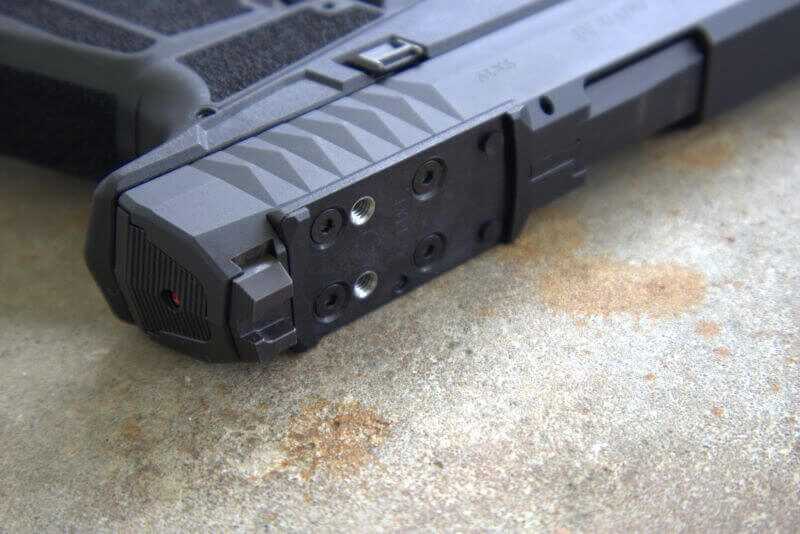
Arex Optic Ready System
The Arex Delta uses the Arex Optic Ready System. A fancy workaround term for including five different adapter plates to mount most optics that are on the market including Noblex, Trijicon RMRs, and Shield Arms footprint optics. The plates are numbered by type and are made of polymer rather than machined aluminum. This cuts down on the cost it would take to supply the user with five aluminum plates, four of which would be useless in the box.
Although less durable over the long haul over metal, these polymer plates can remain mounted with the Loctited screws and afford a surprisingly secure hold on the optic. I decided to match polymer with a polymer Viridian RFX 11 3 MOA Green Dot, although I did most of my shooting with iron sights.
Arex Delta Gen. 2 Quick Specs
- Caliber: 9mm Luger (9x19mm)
- Capacity: 15+1 (19-round magazines available)
- Barrel Length: 4.0 inches (M Model)
- Overall Length: 7.0 inches
- Height: 4.5 inches (sans optic)
- Width: 1.09 inches
- Weight: 27 oz. loaded
Disassembly
If you have taken down a Glock, Smith & Wesson, or Sig, taking down the Arex Delta will be mostly familiar. With the magazine removed and the striker cocked, the slide is withdrawn slightly and the takedown tabs pulled down. Dry-firing the pistol allows the slide to ride forward. But instead of coming straight off the rails, the slide rides forward until the slide rails meet a relief cut in the frame, where the slide is lifted out instead of pulled forward.

Otherwise, the Arex breaks down in the usual manner. The recoil spring and barrel can be plucked from the slide for cleaning. Interestingly, the Delta uses a dual recoil spring and a steel guide rod instead of the usual polymer unit on other pistols.
On the Range with the Arex Delta Gen. 2
I have been shooting the Arex Delta Gen. 2 for the better part of half a year. My particular model is the mid-sized M model. These pistols are imported by Global Ordnance in Sarasota Florida, and pack in a hard case with two magazines, one flush-fitting 15-rounder, and an extended 15-rounder that is identical to other 19-round magazines that are out there. It also ships with five optics plates and the hardware needed to mount an optic.
Thus far, I have over six hundred rounds through this handgun. Most of that mileage was done with the stock iron sights, but over the last two hundred, I slapped on that Viridian optic. Both the optic and the mounting system have held up with no rattling and no loss of zero. Although the system and the pistol itself are quality well beyond its price point, my run with the Arex Delta was not a perfect one and there are a few improvements that will make it that much better.

Breaking In the Trigger
Loading up the Delta was easier than expected. Magazines from a brand-new pistol tend to be hard to load by thumb pressure alone. However, the two included steel-bodied magazines loaded well, though it got tight to fit that fifteenth round in initially. The cocking serrations gave me enough of a grip to rack the slide, which was neither tough or gentle to manipulate compared to other double-stack 9mm pistols. The inclusion of an optic made the slide even easier to work with.
The biggest challenge to shooting the Arex Delta was the trigger. The length of travel is perhaps a little shorter than a double-action revolver, but spongier. There is some obvious stacking for about 1/3 of an inch and you can feel you are taking up the slack of the striker, a fact confirmed when you can see the back of the striker protruding from the backplate of the slide. But once you hit that wall, the trigger breaks readily.
If you are used to other striker-fired pistols, like I am, this can throw you off your game. But this trigger system has its merits. Once you know where that wall is, you can stage the trigger as you would with a double-action revolver where a slight amount of pressure sets the pistol off. The initial travel of the trigger and slightly heavier weight also help to alleviate safety concerns some might have about carrying around a striker-fired pistol with a loaded chamber. It is a trigger that you have to mean to pull and it is still conductive to some fine accuracy.
Accuracy
Once I had the trigger down, it was not hard to engage steel out to fifty yards. In terms of accuracy, it came down to the type of ammunition I was using. Although optics can make you shoot a bit faster, my accuracy with the Viridian mirrored that of the iron sights. However, I could put follow-up shots out a bit faster at those extended distances beyond 15 yards. I ran a steady diet of Igman 124 grain FMJ through the Arex, but I also tested loads ranging from Hornady Critical Defense 100 grain and Hornady Critical Duty 135 grain +P FTX loads to Winchester 115 grain JHPs and Sig 147 grain subsonic. I even had the chance to test the new MagTech 115-grain Steel Case load through the Arex.

There were no shifts in the point of impact of any of these rounds, but the MagTech and Winchester rounds gave the best accuracy. I could reliably put five rounds into a three-inch group at 15 yards with either ammunition, but the other loads were not far behind. The 135 grain +P ammunition produced the most recoil, but the Arex did well in the handling department and recoil and muzzle rise was never prohibitive. That was aided, no doubt, thanks to a high gripping surface and a flattened backstrap that distributes recoil into the palm better than a rounded strap that concentrates it into the web of the hand.
Ergonomics and Reliability
Right out of the factory box, I experienced a single failure to go into battery from the first magazine of Igman 124 grain ammo. For the next four hundred rounds, I had no failures to feed or fire that ammunition or any of the hollow points tested. I did experience three more failures to go into battery when I switched to MagTech 115 grain Steel Cased ammunition. A hit to the back of the slide readied the pistol to fire.
Fortunately, the remaining two hundred rounds went downrange without issue. It was not a perfect run, but it was a good one considering I took the pistol out of the factory oil and simply started shooting it without any cleaning or additional lubrication. I don’t recommend doing that, but all things considered, the Arex went far with no hard issues on the firing line
The only hard issue I faced happened during the loading and unloading sequence. All of the controls are easy to reach on both sides of the pistol. My short thumbs easily depressed the slide release on demand, but I could not say the same for the magazine releases. The releases are melted so it is hard to tell by feel that you are running your thumb across them and there is not much of a button for you to depress. I had to shift my grip and press hard to drop the magazine. I suppose having a melted magazine release helps to prevent you from accidentally dropping your magazine, but in my case, it also retained the empty magazines when I needed a loaded one. It was quite a sore spot for an otherwise pleasant pistol to shoot.
Arex Delta Gen.2: More Than You Pay For
As a left-handed shooter and a fan of double-action guns, the Arex Delta has a lot of what I wanted in a more modern handgun. Although I am averse to new companies, the appeal of the Arex Delta is obvious. Until recently, getting a polymer-framed pistol for under $500 was a hard task.
READ MORE: Upgrade Your AR: Meet The New Aero Precision Components
Despite the march of inflation and an increasing need for extra features like ambidextrous controls and optics-ready capacities, staying in that ballpark is doable. The Arex Delta Gen. 2 could serve as an entry-level option because of its price point and its longer trigger pull for safety. The Delta also delivers for lefties who want controls on their dominant side. Having all the extras only spices the pot and allows any shooter to grow or shrink the platform depending on their preferences.
Although I wished for a more prominent magazine release, it would be a Gen. 3 fix. But as it stands now, the Arex Delta, as quirky as it is, is a tough offering that has something to offer for anyone looking for a polymer pistol with some of the latest features.
*** Buy and Sell on GunsAmerica! ***

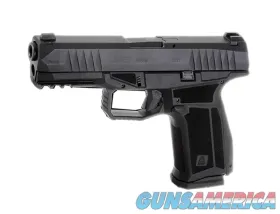
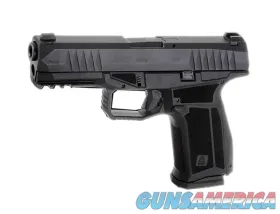
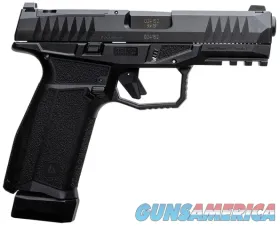
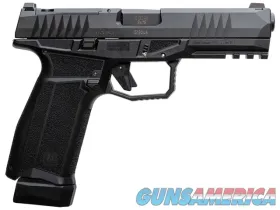
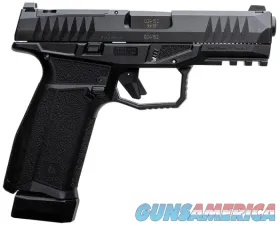
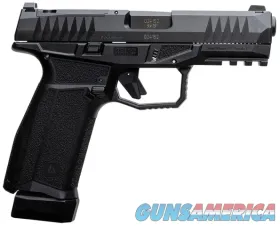
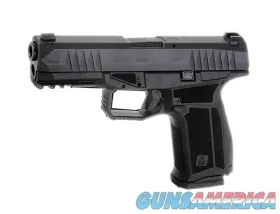
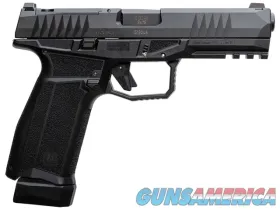
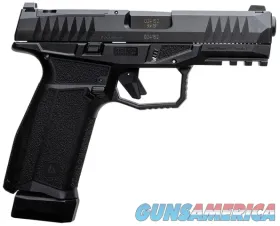
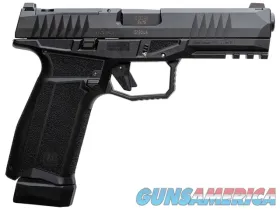

That magazine catch/release is HORRIBLE!!! Is there not enough trend info out there warranting against sych a poor new product release? This one little-big-deal feature will kill this pistol’s market value and appeal, there are better priced better executed handguns of this genre available.
I have one. It is very snappy and the plastic is very much like sandpaper. The trigger dongle is sharp and uncomfortable. The mag release is very small and insanely hard to push. I have worked it hundreds of times and with an empty mag it is now decent. Loaded mag not so much. The slide hits my thumb and regularly draws blood. I ran around 100 rounds of mixed brands 115 grain ammo thru it and had one failure to pick up a round and one failure to go into battery. It will hopefully do better as it breaks in. I bought this online along with a Mosberg MC2SC without ever handling either one in person. The Mossberg is MILES ahead of the Arex. Not snappy and very comfortable in the hand. Zero malfunctions with my wife and I both shooting it using the same mixed 115 grain fmj and hollow points. It is a bit smaller but still holds around 15 with one in the chamber, if memory serves. Trigger feels great! Mag will drop out when the button is pressed. I will be selling or trading the Arex for the Mossberg. What a GREAT pistol!!!!